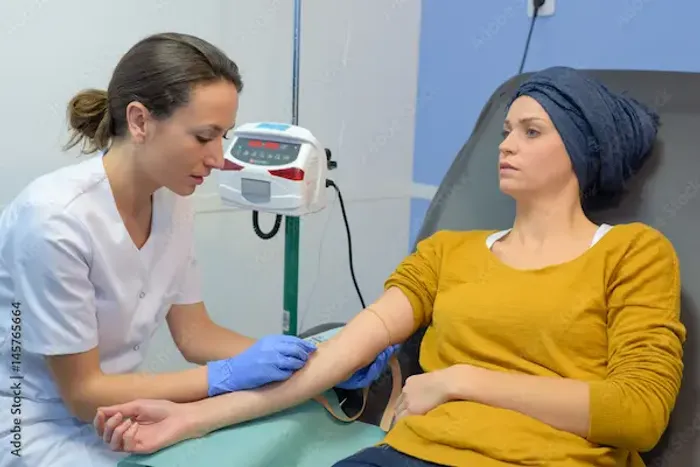Guide to Hipec Advanced Chemotherapy Treatment Destroy Cancer
Know about hipec, what it is, what it treats, procedure, alternatives to hipec, myths, risks and more.

Written by Dr. Siri Nallapu
Reviewed by Dr. Rohinipriyanka Pondugula MBBS
Last updated on 21st Oct, 2025

Introduction
When cancer spreads inside the abdomen, it often seeds the lining called the peritoneum. Standard chemotherapy has a hard time reaching these tiny cancer deposits. That’s where HIPEC hyperthermic intraperitoneal chemotherapy comes in. After surgeons remove visible tumours, they bathe the abdomen with warmed chemotherapy to destroy leftover cancer cells that the eye can’t see. In this guide, we explain what HIPEC is, which cancers it can treat, how the procedure works, and what the research says. You’ll find practical advice on preparing for surgery, recovery, risks, alternatives like EPIC and PIPAC, and how to choose a centre. If you or a loved one is considering HIPEC advanced chemotherapy to destroy cancer, this comprehensive, easy-to-read resource will help you have informed conversations with your care team.
What Is HIPEC? The Cancer-Fighting Power of Warmed Chemotherapy
HIPEC stands for hyperthermic intraperitoneal chemotherapy. It’s a targeted treatment delivered directly inside the
abdomen immediately after a specialised operation called cytoreductive surgery (CRS). Instead of infusing
chemotherapy through a vein, surgeons circulate heated chemotherapy throughout the abdominal cavity for a set period (often 30–90 minutes), then drain it and close the incisions.
Consult a Top Oncology Doctor for Personalised Advice
How HIPEC differs from traditional chemotherapy
- Delivery: HIPEC puts high concentrations of drugs where the cancer is—inside the peritoneal cavity—while limiting
systemic exposure compared with high-dose intravenous therapy. - Timing: It’s delivered once, during surgery, immediately after as much visible tumour is removed as safely possible.
- Goal: Eradicate microscopic residual disease on peritoneal surfaces that can cause recurrence.
Why does heat help chemotherapy
- Heat (typically 41–43°C) increases the penetration of chemotherapy into tissues and sensitises cancer cells to the drugs.
Some agents, like cisplatin and mitomycin C, are more toxic to cancer cells at higher temperatures, potentially boosting
effectiveness [1]. - The abdomen’s blood supply helps protect normal organs by dissipating heat, and careful monitoring keeps
temperatures at safe levels.
The peritoneum and peritoneal malignancies
The peritoneum is a thin, slick membrane lining the abdomen. When cancers like colorectal, ovarian, appendix
(pseudomyxoma peritonei), peritoneal mesothelioma, and gastric cancer spread there, the disease is called peritoneal carcinomatosis or peritoneal metastases. HIPEC focuses treatment on this space, where systemic chemotherapy may
not fully reach due to poor blood supply.
Who Might Benefit: Cancers Commonly Treated with HIPEC
Not every cancer patient is a candidate. HIPEC is most often used when the disease is confined to the peritoneum or
predominantly within it, and when complete or near-complete surgical removal of visible disease is feasible.
Colorectal cancer with peritoneal metastases
- Selected patients with peritoneal-only spread may be evaluated for CRS with or without HIPEC. Evidence is nuanced: the French PRODIGE 7 trial found no overall survival advantage from adding short-duration oxaliplatin HIPEC to high-quality CRS, though both groups lived a median of roughly 41 months [2]. Many centres now individualise the decision and may use other regimens (e.g., mitomycin C) or longer perfusion in studies.
Ovarian cancer (interval cytoreduction)
The OVHIPEC-1 randomised trial showed that adding cisplatin-based HIPEC during interval cytoreductive surgery
after neoadjuvant chemotherapy improved recurrence-free and overall survival in stage III epithelial ovarian cancer, without significantly increasing major complications. This is one of the strongest modern signals for HIPEC benefit in a
specific setting.
Appendix tumours and pseudomyxoma peritonei (PMP)
For low-grade appendiceal tumours that spread mucin in the abdomen, CRS plus HIPEC has achieved long-term disease control in many patients, with 5-year survival often exceeding 70% in expert centres. Outcomes vary by tumour grade and how completely surgeons can remove the disease.
Peritoneal mesothelioma
Though rare, peritoneal mesothelioma can respond well to CRS-HIPEC in selected patients, with multi-centre series reporting median survivals measured in years, especially with complete cytoreduction.
Gastric cancer spread to the peritoneum
Results are mixed. Some analyses suggest potential benefits in very carefully selected patients when complete
cytoreduction is possible, but randomised trials have not consistently shown an overall survival advantage, and HIPEC
remains investigational in many regions for gastric cancer.
When HIPEC is not recommended
Widespread disease outside the abdomen (e.g., lung or bone metastases), poor performance status, inability to achieve
adequate cytoreduction, severe medical comorbidities, or tumours known not to respond to intraperitoneal
chemotherapy. Your surgeon and oncologist will assess fitness, imaging, and diagnostic laparoscopy findings to guide this decision. If you’re unsure whether you’re a candidate, consult your cancer team; if symptoms persist or you have
rapid abdominal distension, consider consulting a doctor online with Apollo24|7 for timely evaluation.
How HIPEC Is Done: Step-by-Step Inside the Operating Room
Cytoreductive surgery (CRS)
- The surgeon removes visible tumour deposits from the peritoneal surfaces and affected organs. This can involve
peritonectomy (peeling diseased peritoneum), removing the omentum, and sometimes segmental bowel resections,
spleen, gallbladder, or parts of the diaphragm—always balancing benefit and safety. - Surgeons often score disease burden using the Peritoneal Cancer Index (PCI). Lower PCI and the ability to remove all
visible disease (completeness of cytoreduction, CC score) are strong predictors of outcome.
Perfusing heated chemotherapy
- After CRS, catheters and temperature probes are placed. A perfusion machine circulates a warmed chemotherapy
solution throughout the abdomen. - The “closed” technique seals the abdomen and gently agitates the patient to distribute the solution; the
“open/Coliseum” technique temporarily elevates the skin edges to stir the fluid under direct vision. Both aim for even
exposure.
Common drugs and temperatures
Common HIPEC agents include mitomycin C (frequently used in colorectal and appendix), oxaliplatin (used in some
centres for colorectal), and cisplatin (commonly used in ovarian and mesothelioma). Target temperatures usually range
from 41–43°C, adjusted per protocol and patient safety.
How long does HIPEC take?
Perfusion times vary by protocol, typically 30–90 minutes. The entire operation including CRS and setup can last many
hours. Patients go to a recovery area or ICU for close monitoring after surgery.
Ovarian cancer (OVHIPEC-1)
The NEJM OVHIPEC-1 trial evaluated cisplatin HIPEC (100 mg/m2, 40°C, 90 minutes) during interval cytoreductive
surgery after neoadjuvant chemotherapy. HIPEC improved recurrence-free survival (14.2 vs. 10.7 months) and overall
survival (45.7 vs. 33.9 months), with similar postoperative complication rates between groups [3]. These results have
influenced practice for carefully selected stage III patients at interval debulking.
Appendix/PMP
Multi-institutional series show durable disease control with CRS-HIPEC, particularly in low-grade PMP where
complete cytoreduction is achievable. Five-year survival commonly exceeds 70% in specialised centres, and many
patients live a decade or more [4]. High-grade disease requires more aggressive systemic therapy and has lower survival,
but CRS-HIPEC can still offer benefit for selected patients.
Peritoneal mesothelioma
Large cohort studies report median survivals beyond 4 years with CRS-HIPEC, particularly when complete
cytoreduction is achieved and in epithelioid histology [5]. Systemic options remain limited, so CRS-HIPEC is a
cornerstone at expert centers.
Gastric cancer
Systematic reviews and some trials suggest potential progression-free survival benefits, but overall survival advantages
are inconsistent, and treatment carries significant morbidity. HIPEC for gastric peritoneal metastases is generally
considered investigational and best pursued in clinical trials or high-volume expert centres.
Risks, Side Effects, and Safety with HIPEC
Surgical risks
Any major abdominal operation carries risks: bleeding, infection, blood clots, pneumonia, and anastomotic leak (if
bowel reconnection is required). Prolonged ileus (temporarily “sleepy” bowel) is common. These risks are generally
higher than for simpler surgeries due to the operation’s length and complexity [7].
Chemotherapy-specific risks
Kidney injury is a concern with cisplatin; teams often give vigorous IV fluids and protective agents and monitor urine
output closely. Blood count suppression (neutropenia, anaemia, thrombocytopenia) can occur, depending on the drug
used. Rarely, nerve injury (with oxaliplatin) or liver stress may be seen. Care teams tailor regimens to minimise these
risks.
How experienced centres reduce complications?
- Prehabilitation (nutrition, exercise), enhanced recovery protocols, specialised anaesthesia, and meticulous fluid and temperature management reduce complications.
- High-volume centres demonstrate lower morbidity/mortality and better outcomes. Ask your surgeon about their case
volume, morbidity rates, and completeness of cytoreduction rates.
What you can do
- Stop smoking (ideally 4+ weeks before surgery), optimise blood sugar and blood pressure, and build stamina with light
cardio and strength training as advised. - Pre-op labs like CBC and kidney function are essential—Apollo24|7 offers convenient home collection for tests such as
CBC and creatinine if recommended by your doctor.
Recovery and Life After HIPEC
The recovery and life after includes:
Hospital stay and immediate recovery
Typical hospitalisation ranges 7 to 14 days. Pain is controlled with multimodal strategies, often including an epidural or
nerve blocks. You’ll start with sips of water, moving to liquids, then soft foods. The care team encourages early walking
to reduce clot risk and speed bowel recovery.
Nutrition and energy
High-protein, small, frequent meals help healing. A dietitian can tailor guidance if you’ve had part of your bowel
removed. Hydration is key. Some patients benefit from oral nutrition supplements.
Returning to daily life
Plan 6–12 weeks for full recovery, depending on surgery extent. Gentle activity is encouraged; avoid heavy lifting until
cleared. Many people return to desk work in 4–8 weeks; physically demanding jobs may take longer.
Follow-up care
Expect regular check-ups, blood tests, and imaging. Some people continue or resume systemic chemotherapy depending
on the pathology and tumour type. Report warning signs—fever, worsening pain, persistent vomiting, or wound
issues—promptly. If symptoms persist beyond two weeks or worsen after discharge, consult a doctor online with
Apollo24|7 for further evaluation, or book a physical visit for an in-person assessment if advised.
Quality of life
Many patients report a gradual return to baseline QoL over months. Fatigue and digestive changes can last several
weeks. Peer support groups and survivorship programs can help navigate the transition.
Alternatives and Complements: Systemic Chemo, EPIC, and PIPAC
Systemic chemotherapy
For many, especially with extensive or extra-abdominal spread, IV chemotherapy is the mainstay. It treats disease
throughout the body and can shrink tumors before surgery. For some colorectal and gastric cases, systemic therapy
remains standard, with HIPEC considered only in trials or select centres.
EPIC (Early Post-Operative Intraperitoneal Chemotherapy)
EPIC delivers intraperitoneal chemotherapy via catheters in the days following surgery. It’s used less commonly today
due to infection and leak risks, but remains an option in select protocols. Some centres combine or alternate EPIC with
HIPEC depending on tumour biology and response.
PIPAC (Pressurised Intraperitoneal Aerosol Chemotherapy)
PIPAC delivers aerosolised chemotherapy into the abdomen laparoscopically under pressure, typically in multiple
cycles. Early studies suggest symptom relief and disease control in some patients who are not candidates for CRS-
HIPEC, especially in gastric and ovarian peritoneal metastases. PIPAC is generally offered in trials or specialised
programs and may be an option for those seeking a less invasive intraperitoneal approach.
Costs, Access, and Choosing a Centre
Costs and insurance
CRS-HIPEC is resource-intensive. Costs vary widely by country, hospital stay length, and insurance coverage. Ask for a
detailed estimate, including surgeon, anesthesiology, hospital, ICU, perfusion equipment, and postoperative care.
Choosing a centre and surgeon
Look for high-volume programs with a multidisciplinary team (surgical oncology, medical oncology, anaesthesia, ICU,
nutrition, rehab).
- Ask:
- How many CRS-HIPEC procedures do you perform per year?
- What are your morbidity and mortality rates?
- What are my chances of complete cytoreduction (CC-0/1) given my PCI?
- Which HIPEC drug and duration do you recommend, and why?
- What is the expected hospital stay and recovery course?
Finding programs and trials
Academic cancer centres often host HIPEC programs. ClinicalTrials.gov lists ongoing trials by disease type. Patient
advocacy groups for pseudomyxoma peritonei, mesothelioma, and ovarian cancer often maintain treatment centre lists.
India context and teleconsults
In India, CRS-HIPEC is available at select tertiary centres. If you’re seeking a second opinion or need help interpreting
scans or tumour board recommendations, consider consulting a doctor online with Apollo24|7. They can guide referrals and coordinate pre-op investigations.
Preparing for HIPEC: What to Do Weeks Before Surgery
Nutrition and exercise prehabilitation
- Target 1.2–1.5 g/kg/day of protein (as advised by your dietitian) to support healing. Emphasise lean proteins, whole
grains, fruits, and vegetables. Correct anaemia and micronutrient deficits if present. - Aim for 150 minutes/week of moderate activity if feasible, plus light strength training. Even short daily walks help.
Fertility, menopause, and sexual health
Ovarian and peritoneal surgeries can impact fertility and hormonal function. Discuss fertility preservation (egg/embryo
freezing) before treatment if relevant. Ask about surgical menopause management and sexual health supports.
Mental readiness and caregiver planning
Line up a caregiver for at least the first 1–2 weeks after discharge. Prepare your home: organise medications, set up a
comfortable rest area, and arrange for easy-to-digest foods. Mindfulness, counselling, and peer support can reduce
anxiety. If your condition does not improve after trying these methods or you feel overwhelmed, book a physical visit to a doctor with Apollo24|7 for comprehensive support.
Myths vs. Facts About HIPEC
- Myth: HIPEC is experimental for all cancers.
- Fact: It’s standard at many centres for select conditions like pseudomyxoma peritonei and peritoneal mesothelioma, and
supported by randomised data in specific ovarian cancer settings. For colorectal and gastric peritoneal spread,
recommendations vary; ongoing trials continue to refine indications [2–6]. - Myth: HIPEC replaces systemic chemotherapy.
- Fact: Most patients also receive systemic chemotherapy before or after surgery as part of a comprehensive plan.
- Myth: Heat “burns” healthy organs.
- Fact: Temperatures are carefully controlled and monitored. Protective measures limit injury; toxicity relates more to
drug choice and surgical complexity. - Myth: Recovery is always intolerable.
- Fact: Recovery is significant but manageable with modern enhanced recovery pathways. Many patients resume their usual activities within weeks.
Conclusion
HIPEC is a powerful tool in the fight against peritoneal cancer spread. By combining meticulous tumour removal with heated chemotherapy in the abdomen, it targets cancer where systemic drugs often struggle to reach. The evidence is strongest in certain settings, such as interval cytoreduction for advanced ovarian cancer or select appendix and mesothelioma cases. For colorectal and gastric cancers, the role of HIPEC is more nuanced and should be individualised at high-volume centres. Ultimately, results hinge on careful patient selection, the ability to achieve complete cytoreduction, and the expertise of the surgical team. If you’re considering HIPEC, seek care at a specialised program, ask detailed questions about expected benefits and risks, and prepare your body and support system for recovery. For timely guidance, you can consult a doctor online with Apollo24|7 to review your reports and discuss suitability, and use home collection for preoperative labs when appropriate. With the right plan, many people regain quality of life and meaningful control over their disease.
Consult a Top Oncology Doctor for Personalised Advice
Consult a Top Oncology Doctor for Personalised Advice

Dr. Sanchayan Mandal
Medical Oncologist
17 Years • MBBS, DrNB( MEDICAL ONCOLOGY), DNB (RADIOTHERAPY),ECMO. PDCR. ASCO
Kolkata
MCR SUPER SPECIALITY POLY CLINIC & PATHOLOGY, Kolkata

Dr.sanchayan Mandal
Medical Oncologist
17 Years • MBBS, DrNB( MEDICAL ONCOLOGY), DNB (RADIOTHERAPY),ECMO. PDCR. ASCO
Kolkata
Dr. Sanchayan Mandal Oncology Clinic, Kolkata

Dr. Rupam Manna
Radiation Specialist Oncologist
4 Years • MBBS MD(RADIO THERAPY)
Barasat
Diab-Eat-Ease, Barasat

Dr. Alakananda Choudhury
Radiation Specialist Oncologist
6 Years • MBBS, MD ( Radio Therapy )
Barasat
Diab-Eat-Ease, Barasat

Dr Gowshikk Rajkumar
Oncologist
10 Years • MBBS, DMRT, DNB in Radiation oncology
Bengaluru
Apollo Clinic, JP nagar, Bengaluru
Consult a Top Oncology Doctor for Personalised Advice

Dr. Sanchayan Mandal
Medical Oncologist
17 Years • MBBS, DrNB( MEDICAL ONCOLOGY), DNB (RADIOTHERAPY),ECMO. PDCR. ASCO
Kolkata
MCR SUPER SPECIALITY POLY CLINIC & PATHOLOGY, Kolkata

Dr.sanchayan Mandal
Medical Oncologist
17 Years • MBBS, DrNB( MEDICAL ONCOLOGY), DNB (RADIOTHERAPY),ECMO. PDCR. ASCO
Kolkata
Dr. Sanchayan Mandal Oncology Clinic, Kolkata

Dr. Rupam Manna
Radiation Specialist Oncologist
4 Years • MBBS MD(RADIO THERAPY)
Barasat
Diab-Eat-Ease, Barasat

Dr. Alakananda Choudhury
Radiation Specialist Oncologist
6 Years • MBBS, MD ( Radio Therapy )
Barasat
Diab-Eat-Ease, Barasat

Dr Gowshikk Rajkumar
Oncologist
10 Years • MBBS, DMRT, DNB in Radiation oncology
Bengaluru
Apollo Clinic, JP nagar, Bengaluru
More articles from Cancer
Frequently Asked Questions
Q1: How long is the hospital stay after HIPEC surgery?
Most people stay 7–14 days, depending on the extent of surgery and recovery speed. Enhanced recovery pathways help shorten HIPEC recovery time.
Q2: Does HIPEC replace the need for intravenous chemotherapy?
Not usually. Many patients receive systemic chemotherapy before and/or after CRS-HIPEC to treat microscopic disease beyond the peritoneum and improve outcomes.
Q3: Is HIPEC effective for colon cancer peritoneal spread?
Evidence is mixed. The PRODIGE 7 trial showed no survival advantage from adding short oxaliplatin HIPEC to excellent surgery, but CRS remains crucial. Some centres still use mitomycin C HIPEC or clinical trials for colorectal peritoneal metastases.
Q4: What are the main risks of heated chemotherapy?
Beyond surgical risks, HIPEC can affect the kidneys (especially with cisplatin) and blood counts. Close monitoring and experienced teams reduce these risks.
Q5: Can HIPEC be repeated?
In selected cases, repeat CRS-HIPEC may be considered, particularly for appendix or mesothelioma, but it depends on disease location, prior recovery, and overall health. Discuss with your centre’s tumour board.


